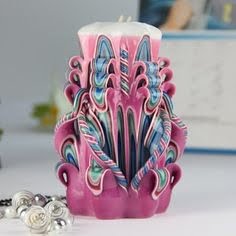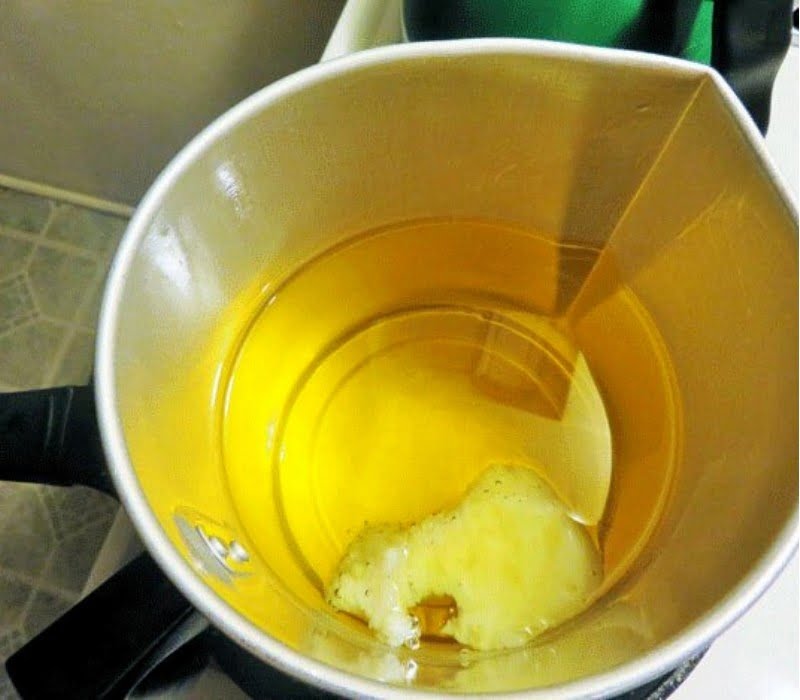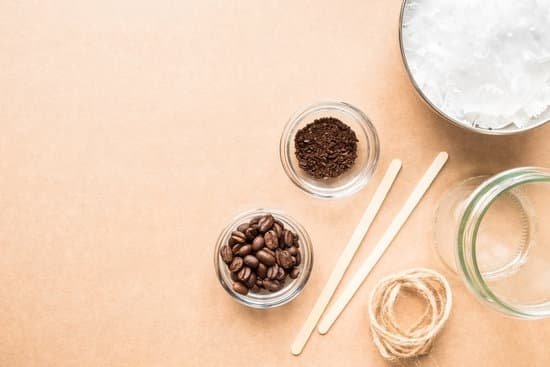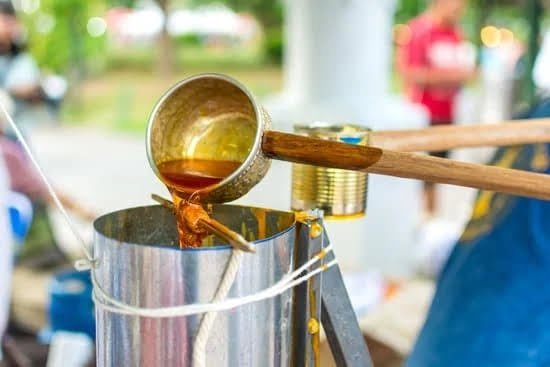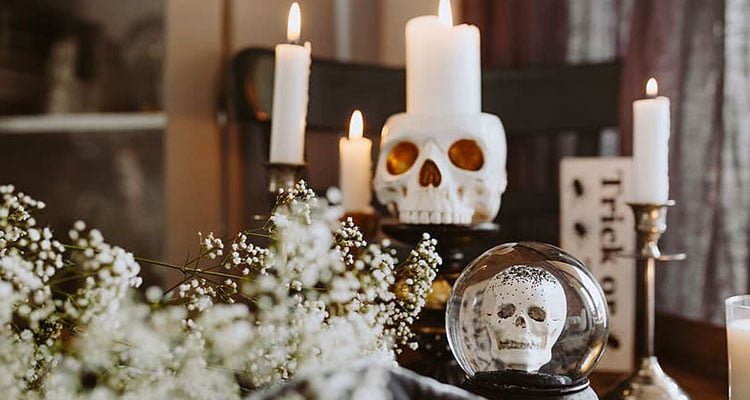When it comes to candle making, the possibilities are endless. From selecting the right wick to choosing the perfect container, every decision contributes to the final product. One aspect that can truly elevate your candles is the addition of essential oils. Essential oils not only provide a pleasant aroma but also offer various therapeutic benefits. In this article, we will delve into the world of essential oils and explore how they can be incorporated into your candle making process.
Using essential oils when making candles opens up a realm of creativity and personalization. You have the power to craft unique scents that reflect your individual preferences or cater to specific moods and experiences. Whether you desire a calming lavender scent for relaxation or an invigorating citrus aroma for an energetic atmosphere, essential oils allow you to infuse your candles with precisely what you envision.
But what are essential oils exactly? How do they work and enhance our sense of smell? In the next section, we will unravel the mysteries behind these potent liquids and dive into their olfactory magic. Understanding essential oils is key to utilizing them effectively in candle making and reaping their numerous benefits. So let us embark on this aromatic journey together as we unlock the potential of essential oils in candle creation.
Understanding Essential Oils
Essential oils are widely used in various industries, including aromatherapy, skincare, and cleaning products. But can you use essential oils when making candles? To answer this question, it is important to understand what essential oils are and how they work.
Essential oils are concentrated plant extracts that capture the natural fragrance and therapeutic properties of plants. They are typically extracted through methods such as steam distillation or cold pressing. Each essential oil has its own unique scent profile and potential health benefits.
When incorporated into candles, essential oils offer a natural and aromatic alternative to synthetic fragrances. They can enhance relaxation, uplift mood, or create a cozy ambiance depending on the chosen oil. The scent of the essential oil will be released as the candle burns, creating a pleasant aroma in your space.
In addition to their fragrance benefits, certain essential oils also possess therapeutic properties that can positively impact our well-being. For example, lavender essential oil is known for its calming effects and may help promote better sleep. Eucalyptus essential oil has invigorating properties and may assist in clearing congestion.
To use essential oils effectively in candle making, it is important to understand how they interact with heat and the other ingredients in the candle wax. This knowledge will help ensure that you achieve the desired scent throw and avoid any unwanted reactions during the burning process.
Here is a step-by-step guide on incorporating essential oils in candle making:
- Choose a suitable wax: Be sure to select a wax that is compatible with essential oils. Soy wax and beeswax are popular choices as they have excellent scent retention properties.
- Determine the appropriate amount: The recommended amount of essential oil to add to your candle wax varies depending on factors such as the type of oil and personal preference. Generally, 1-2 ounces of essential oil per pound of wax is a good starting point.
- Combine the ingredients: Melt your chosen wax according to the manufacturer’s instructions. Once melted, remove from heat and allow it to cool slightly. Add your desired amount of essential oil to the wax and stir gently to ensure even distribution.
- Pour into containers: Carefully pour the scented wax into your chosen candle jars or molds. Allow the candles to cool and set completely before trimming the wicks and lighting them.
By following these steps, you can create beautifully scented candles using essential oils that provide both a pleasant aroma and potential aromatherapy benefits. However, it is important to note that not all essential oils are safe for use in candles, as some may have low flashpoints or cause skin irritation. It is crucial to research each oil thoroughly and adhere to safety guidelines when incorporating them into your candle making process.
Incorporating Essential Oils in Candle Making
When it comes to making candles, incorporating essential oils can add a unique and personalized touch. Not only do they provide a delightful fragrance, but they also offer potential wellness benefits. In this step-by-step guide, we will walk you through the process of incorporating essential oils in candle making.
Step 1: Gather Your Supplies
Before getting started, make sure you have all the necessary supplies on hand. This includes wax (such as soy wax or beeswax), wicks, a double boiler or microwave-safe container for melting the wax, a thermometer, a stirring utensil, a container for the candle, and of course, your chosen essential oils.
Step 2: Calculate the Essential Oil Amount
To determine how much essential oil to use in your candles, it is recommended to follow the general guideline of using around 5-10% of essential oil per weight of wax. For instance, if you have 500 grams of wax, you would want to use approximately 25-50 grams (or drops) of essential oil. Keep in mind that some scents may require more or less than this range for optimal fragrance.
Step 3: Mix and Pour
Once your wax is melted and has reached the desired temperature (usually between 170-180°F or as specified by the manufacturer’s instructions), remove it from heat. Allow it to cool slightly before adding your calculated amount of essential oil. Stir gently but thoroughly to ensure even distribution throughout the wax.
Step 4: Pouring into Containers
Now that your scented wax is ready, carefully pour it into your chosen candle container. Ensure that you have prepped your container by securing the wick in place with adhesive or by using a wick sticker/tab at the center. Leave some space at the top to allow for proper cooling and setting of the candle.
Step 5: Allowing the Candle to Set and Cure
Finally, allow your candle to cool completely and set for at least 24 hours before lighting it. This is an essential step in ensuring a good scent throw and optimal performance when burning your candle. During this curing period, the fragrance of the essential oils will continue to develop, enhancing the overall aroma of your finished product.
By following this step-by-step guide, you can easily incorporate essential oils into your candle making process. From selecting the right scents to calculating the proper amount, each step plays a crucial role in creating beautifully fragrant candles that provide both aesthetic pleasure and potential aromatherapy benefits.
Safety Precautions
Understanding the Potential Risks
Before incorporating essential oils into candle making, it’s important to be aware of the potential risks associated with their use. Essential oils are highly concentrated plant extracts and can be volatile substances. Some essential oils may have a low flash point, which means they can ignite at a lower temperature than other oils. This makes it crucial to handle them with care to avoid accidents and ensure safety during the candle making process.
Proper Measurement and Dilution
When using essential oils in candle making, it’s important to remember that a little goes a long way. Essential oils should be properly measured and diluted before adding them to your candles. This not only helps in achieving the desired scent strength but also ensures that you are using them safely.
To dilute essential oils, you can choose carrier oils such as coconut oil or sweet almond oil. It is recommended to follow a dilution ratio of 1-2% for most essential oils, meaning that for every ounce of carrier oil, you should add no more than 12 drops of essential oil.
Avoiding Overheating
When adding essential oils to the melted wax, it is important to avoid overheating the mixture. Heating the wax above its recommended temperature could compromise the integrity of the fragrance and even cause some essential oils to lose their therapeutic properties.
To prevent overheating, monitor the temperature of your melted wax closely using a thermometer. The ideal pouring temperature for most candles is around 180°F (82°C), but this may vary depending on the specific type of wax and fragrance used. By staying within these temperature guidelines, you can ensure that your candles retain their fragrance and therapeutic benefits while remaining safe for use.
By following these safety precautions when using essential oils in candle making, you can enjoy the aromatic bliss of scented candles while ensuring a safe and enjoyable experience for yourself and others. Taking the time to understand the potential risks, properly measure and dilute essential oils, and avoid overheating will go a long way in creating beautiful, fragrant candles that enhance your space without compromising on safety.
Selecting the Right Essential Oils for Different Candle Types and Fragrance Combinations
When it comes to selecting the right essential oils for different candle types and fragrance combinations, there are a few factors to consider. The type of candle base, the desired scent profile, and the intended purpose of the candle all play a role in choosing the most suitable essential oils.
Firstly, it’s important to understand that different candle bases can affect how essential oils interact with them. For example, soy wax candles tend to have better scent throw and retention compared to other types of wax. This means that you may need to use a higher concentration of essential oils in soy wax candles to achieve the desired fragrance intensity. On the other hand, paraffin wax candles may require less essential oil due to their superior scent retention properties.
Next, consider the desired scent profile for your candles. Essential oils come in a wide variety of scents, ranging from floral and fruity to earthy and woody. It’s important to choose oils that complement each other and create a harmonious fragrance combination. For example, combining lavender and chamomile essential oils can create a soothing and relaxing aroma perfect for bedtime or self-care candles.
Additionally, consider the intended purpose of your candles. If you’re making candles for therapeutic purposes such as stress relief or relaxation, you may want to opt for essential oils known for their calming properties such as lavender or bergamot. On the other hand, if you’re making candles for energizing or uplifting effects, citrusy scents like lemon or orange may be more appropriate.
To help guide your selection process, here is an unordered list of some popular essential oil options categorized based on their fragrance profiles:
- Floral: Rose, jasmine, ylang-ylang
- Fruity: Sweet orange, grapefruit, bergamot
- Woody: Cedarwood, sandalwood, patchouli
- Earthy: Vetiver, frankincense, myrrh Remember that while essential oils can provide enjoyable scent experiences, their usage should be done responsibly. Always follow safety guidelines and dilution recommendations provided by reputable sources to ensure proper usage and prevent any adverse reactions. Experimenting with different combinations and concentrations of essential oils can lead to unique and delightful fragrance blends that add an extra touch of personalization to your candle-making endeavors.
Exploring the Benefits of Using Essential Oils in Candle Making
Essential oils not only add vibrant and unique aromas to candles but also offer a range of benefits that can enhance your candle making experience. Whether you’re creating candles for personal use or looking to sell them, understanding the benefits of using essential oils can help you make informed choices when it comes to fragrance selection.
Aromatherapy Benefits
One of the main advantages of using essential oils in candle making is their potential for aromatherapy benefits. Essential oils have been used for centuries in various cultures for their healing properties and ability to promote relaxation and overall well-being. When incorporated into candles, these oils release their therapeutic scents, allowing you to create a calming ambiance and transform any environment into a serene sanctuary.
Different essential oils offer distinct aromatherapy benefits. For example, lavender essential oil is well-known for its calming and stress-relieving properties, while citrusy scents like lemon or orange can uplift moods and promote positivity. Peppermint essential oil is often used for its invigorating effects, perfect for boosting energy levels during study or work sessions.
Healthier Scent Options
Using essential oils in candle making provides a healthier alternative to synthetic fragrance oils that are typically loaded with chemical additives or irritants. Essential oils are derived from natural sources such as flowers, fruits, herbs, and trees through processes like distillation or cold pressing. This natural extraction method ensures that the beneficial compounds present in the plant materials remain intact in the oil.
As a result, when burning an essential oil-infused candle, you can enjoy a cleaner scent experience without exposing yourself or others to potentially harmful toxins commonly found in synthetic fragrances. This makes essential oil candles particularly beneficial for individuals with sensitivities or allergies to artificial fragrances.
Customizable Fragrance Combinations
With countless essential oil options available today, you have the freedom to create your own unique fragrance combinations that suit your personal preferences or match specific occasions. Essential oils come in various scents, including floral, citrus, woody, herbal, and spicy notes. They can be used individually or blended together to achieve a signature scent for your candles.
Experiment with different combinations to find your perfect blend. For example, the calming aroma of lavender can be complemented by the uplifting scent of bergamot or balanced with patchouli for a more earthy touch. The possibilities are endless when it comes to creating personalized fragrances using essential oils in candle making.
By harnessing the benefits of essential oils in candle making, you can elevate your creations beyond mere fragrance options. The therapeutic properties offered by these natural extracts and the ability to customize scents according to your preferences make essential oil-infused candles a truly special addition to any setting. With proper knowledge and precautions, incorporating essent+ial oils into your candle-making process can offer an enriching experience that enhances both the aesthetic and aromatic aspects of your candles.
Tips and Tricks for Maximizing the Scent Throw of Essential Oils in Candles
To create a highly fragrant candle using essential oils, there are several tips and tricks that can help maximize the scent throw. This section will explore some of these techniques to ensure that your candles not only have a strong aroma but also provide a long-lasting fragrance.
One important factor to consider is the amount of essential oil used in the candle making process. It is essential to use the appropriate ratio of essential oil to wax in order to achieve the desired scent throw. Generally, a safe rule of thumb is to use about 1 ounce of essential oil per pound of wax. However, it’s crucial to check the recommended dosage for each specific fragrance as they may vary.
Another tip for enhancing the scent throw is to choose high-quality essential oils. Pure and natural essential oils tend to have stronger and longer-lasting fragrances compared to synthetic oils or fragrance oils. Look for oils that are labeled as therapeutic grade or steam distilled, as these are often regarded as premium quality.
The type and size of the wick can also impact the scent throw of your candles. A properly sized wick promotes an even burn, which allows for better diffusion of the fragrance throughout the room. If you find that your candles have a weak scent throw, try using a larger wick size or switching to a different type of wick material that is better suited for your specific candle formulation.
Lastly, proper curing time is crucial for maximizing the scent throw of your candles. Allowing your freshly poured candles to cure for at least 48 hours before burning will improve their performance and ensure that the fragrance fully develops. It’s important to note that certain scents may require longer curing times, so refer to the guidelines provided by your essential oil supplier for specific recommendations.
| Tips | Tricks |
|---|---|
| Use appropriate ratio of essential oil to wax | Choose high-quality essential oils |
| Select the right wick size and material | Allow for proper curing time before burning |
Experimenting with Essential Oils
One of the most exciting aspects of using essential oils in candle making is the opportunity to experiment with unique and creative fragrance ideas. Essential oils offer a wide range of scents, from familiar and traditional to exotic and unexpected. By exploring different combinations and concentrations, candle makers can create one-of-a-kind aromas that will delight the senses.
When it comes to experimenting with essential oils in candles, the possibilities are truly endless. One idea is to mix various essential oils together to create a custom scent that is personal and unique. For example, blending lavender with vanilla can create a soothing and comforting fragrance perfect for relaxation. On the other hand, combining lemongrass with eucalyptus can produce an invigorating aroma that is ideal for brightening up a room.
Another creative option is to use essential oils to recreate the scents found in nature. For nature lovers, this can be a way to bring the outdoors inside. Essential oils like pine or cedarwood can replicate the fresh scent of a forest, while lemon or orange can mimic the fragrance of citrus groves. By incorporating these natural essences into candles, one can not only enjoy their beloved aromas but also embrace the therapeutic benefits they provide.
Additionally, candle makers may consider using essential oils to evoke specific moods or atmospheres. For example, bergamot and ylang-ylang create a sensual and romantic ambiance, perfect for setting the mood for an intimate evening. On the other hand, peppermint or spearmint essential oil may promote focus and concentration, making it an excellent choice for workspaces or study areas.
Addressing Common Concerns and Myths About Using Essential Oils in Candles
As with any popular trend or ingredient, there can be concerns and myths surrounding the use of essential oils in candle making. It’s important to address these misconceptions in order to make informed decisions about incorporating essential oils into your candle-making process.
One common concern is that essential oils are too potent and may cause allergies or irritations when used in candles. While it is true that some individuals may have sensitivities or allergic reactions to specific essential oils, this is not a reason to dismiss their use altogether.
In fact, using high-quality, pure essential oils in proper dilution can minimize the risk of adverse reactions. It’s important to test a small sample of the scent before creating larger batches of candles and carefully follow recommended usage guidelines provided by reputable sources.
Another myth surrounding the use of essential oils in candles is that they are not as fragrant as synthetic fragrances or fragrance oils. This misconception stems from the fact that synthetic fragrances often have stronger initial scents compared to essential oils.
However, it’s worth noting that essential oil scents tend to evolve over time and become more complex as they interact with heat and air. Additionally, many candle makers find that the natural aromas of essential oils have a depth and authenticity that cannot be replicated by synthetic fragrances.
Furthermore, some people believe that using essential oils in candle making is costly or impractical due to their higher prices compared to fragrance oils. While it is true that high-quality essential oils can be more expensive than synthetic alternatives, a little goes a long way when it comes to using them in candles. The concentrated nature of essential oils means you only need a small amount for each batch, making them cost-effective in the long run.
| Concern/Myth | Response |
|---|---|
| Essential oils can cause allergies or irritations in candles. | Using high-quality, pure essential oils in proper dilution minimizes the risk of adverse reactions. Perform a small sample test before making larger batches. |
| Essential oils are not as fragrant as synthetic fragrances. | While initial scents may vary, essential oil scents evolve and become more complex over time. They offer an authentic aroma that cannot be replicated by synthetic fragrances. |
| Using essential oils in candles is too expensive. | A little goes a long way with essential oils, so their higher price is offset by their concentrated nature. They are cost-effective in the long run due to the small amount needed for each batch. |
By debunking myths and addressing common concerns about using essential oils in candle making, individuals can feel more confident and informed when exploring this aromatic and creative endeavor.
Conclusion
In conclusion, incorporating essential oils in candle making is a fascinating and rewarding endeavor. Not only do essential oils add delightful fragrance to candles, but they also offer various therapeutic benefits through aromatherapy. By understanding the properties and characteristics of different types of essential oils, candle makers can create unique and personalized scents that enhance both the atmosphere and the well-being of individuals.
It is important to note that safety precautions should always be taken when using essential oils in candle making. Proper measuring and handling techniques should be followed to ensure the desired scent throw without compromising on safety. Additionally, selecting the right essential oils for different candle types and fragrance combinations is crucial for achieving desired results.
Furthermore, by experimenting with different combinations of essential oils, candle makers have the opportunity to create truly original and captivating fragrances. This allows for a limitless range of creative possibilities in candle making, opening doors to endless artistic expression.
Overall, the use of essential oils in candle making brings together artistry and aromatherapy in a harmonious way. The scents created not only provide a pleasant olfactory experience but also offer potential therapeutic benefits for relaxation, stress relief, or other specific needs. With proper knowledge and care, essential oil-infused candles can transform any space into a haven of tranquility and well-being.
Frequently Asked Questions
Can you use essential oils in soy candles?
Yes, you can use essential oils in soy candles. In fact, many people prefer using essential oils over synthetic fragrances because they are derived from natural sources such as flowers, fruits, and herbs. When adding essential oils to soy candles, it is important to consider their unique properties and potential for scent throw.
Since soy wax has a lower scent throw than other types of wax, it is advisable to use a higher concentration of essential oil to achieve a stronger fragrance in your soy candles. However, it’s crucial to conduct small test batches to determine the ideal scent strength without compromising the candle’s quality or causing any issues with burning.
Can you use essential oils in candles instead of fragrance oils?
Absolutely! Essential oils can be used as an alternative to fragrance oils in candles. While fragrance oils are specifically manufactured for candle-making and typically offer a wider range of scents to choose from, essential oils provide a more natural option that may have therapeutic benefits as well.
However, there are some factors to consider when substituting fragrance oils with essential oils in candle-making. Essential oils tend to have different volatility levels and consistencies compared to fragrance oils, which can affect how they blend and distribute within the candle wax. Additionally, some essential oils may have a lower flash point than others due to their volatile nature—meaning they may evaporate or lose their scent during the burning process—so proper testing is key before creating larger batches.
How much pure essential oils do I use when making candles?
The amount of pure essential oils used when making candles depends on several factors such as the desired strength of scent and the type of wax being used. As a general guideline, many candle makers recommend using 6-10% essential oil by weight relative to the wax you are working with. For example, if you are using one pound (454 grams) of wax, you would typically add around 27-45 grams of pure essential oil.
However, these percentages may vary based on personal preference and the specific brand or type of essential oil being used. It’s important to note that some essential oils have a potent aroma, so it’s always wise to start with a smaller amount and increase gradually to avoid overpowering or irritating scents. Experimentation and testing small batches are crucial for finding the perfect balance of scent strength in your homemade candles.

Welcome to my candle making blog! In this blog, I will be sharing my tips and tricks for making candles. I will also be sharing some of my favorite recipes.

